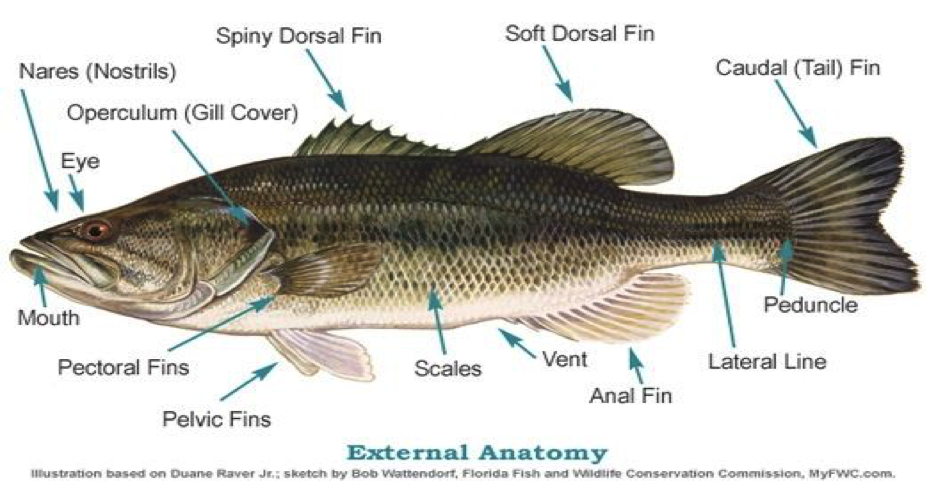Water Habitations for the Clean & the Unclean:
“A body of living water is shared by the Clean and the Unclean fishes including Predators and Preys as well as non-fishes. The HIGHEST created bodies of water, and every living thing in it has its purpose and a home, so it’s good to know where the clean & unclean fishes reside. Please view the information below regarding the different habitations including the ocean and lakes that gives us insight in a fish’s world.”
Article on Pelagic fishes, Epipelagic fishes, and Demersal fishes and their environment:
Pelagic Fish:
Pelagic fish - Wikipedia - Pelagic fish live in the pelagic zone of ocean or lake waters—being neither close to the bottom nor near the shore—in contrast with demersal fish that do live on or near the bottom, and reef fish that are associated with coral reefs.[1] Marine pelagic fish can be divided into coastal (inshore) fish and oceanic (offshore) fish. Coastal pelagic fish inhabit the relatively shallow and sunlit waters above the continental shelf, while oceanic pelagic fish inhabit the vast and deep waters beyond the continental shelf (even though they also may swim inshore).[3][4] Pelagic fish range in size from small coastal forage fish, such as herrings and sardines, to large apex predator oceanic fishes, such as bluefin tuna and oceanic sharks.[1] They are usually agile swimmers with streamlined bodies, capable of sustained cruising on long-distance migrations. Many pelagic fish swim in schools weighing hundreds of tonnes. Others, such as the large ocean sunfish, are solitary .[1] There are also freshwater pelagic fish in some of the larger lakes, such as the Lake Tanganyika sardine.[5]
Epipelagic Fish:
Pelagic fish - Wikipedia - Epipelagic fish inhabit the epipelagic zone, the uppermost layer of the water column, ranging from sea level down to 200 m (660 ft). It is also referred to as the surface waters or the sunlit zone, and includes the photic zone. The photic zone is defined as the surface waters down to the depth where the sunlight is attenuated to 1% of the surface value. This depth depends on how turbid the water is, but can extend to 200 m (660 ft) in clear water, coinciding with the epipelagic zone. The photic zone allows sufficient light for phytoplankton to photosynthesize.[6] A vast habitat for most pelagic fish, the epipelagic zone is well lit so visual predators can use their eyesight, is usually well mixed and oxygenated from wave action, and can be a good habitat for algae to grow…Epipelagic fish can be divided broadly into small forage fish and larger predator fish that feed on them. Forage fish school and filter feed on plankton. Most epipelagic fish have streamlined bodies capable of sustained cruising on migrations.
Demersal Fish aka Bottom Feeders/Groundfish:
Demersal fish, also known as groundfish, live and feed on or near the bottom of seas or lakes (the demersal zone).[1] They occupy the sea floors and lake beds, which usually consist of mud, sand, gravel or rocks. Demersal fish are bottom feeders. They can be contrasted with pelagic fish which live and feed away from the bottom in the open water column. For more information, please click on the link (Demersal fish - Wikipedia).
“Upon our research, it has been stated that some fishes with fins and scales may deviate from their diet while navigating in different water zones and consume foods that they may not be accustomed to eating. 2nd Edras chapter 5 verse 8 touched on this matter where there will be Confusion in many places including animals changing their locations! As far as them eating things different from their usual diet, we’re unsure why they do it, so what we say about anything that we cannot confirm in the Scriptures and with additional research outside of the Word is Deuteronomy 29:29.”
2nd Edras 5:8 - There shall be a confusion also in many places, and the fire shall be oft sent out again, and the wild beasts shall change their places, and menstruous women shall bring forth monsters:
Deuteronomy 29:29 - The secret things belong unto the LORD our God: but those things which are revealed belong unto us and to our children for ever, that we may do all the words of this law.
***Therefore, concerning the Law given to us regarding Clean & Unclean marine life, we are Only to eat fishes with fins & scales!***


